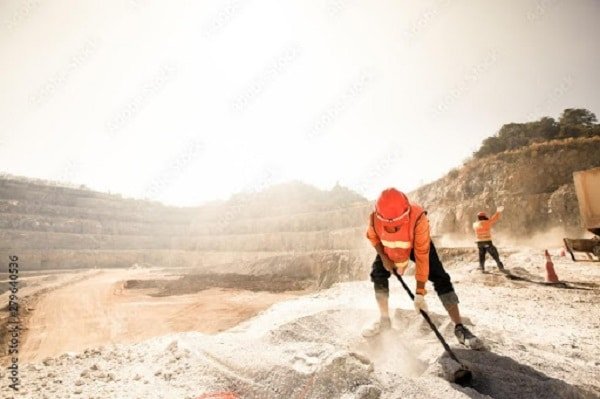It’s summertime! While many people out there are enjoying the fun to be had during this warm weather period, beware of the risks of heat illnesses due to excessive exposure to high temperatures and humidity levels. This warning is even more relevant for people working outdoors, especially workers employed in the construction industry and oil and gas well operations. And it becomes critical during extremely high temperatures and heat wave periods as individuals will in variably suffer from heat stress.
What is Heat Stress?
Read our blog Protecting Workers from Heat Stress, to learn more.
Presently, more than 60 million people are experiencing a heat wave in the U.S. According to The New York Times, the Midwest and Southeast regions will suffer from excessively high temperatures in the coming weeks, with several cities already having broken daily high-temperature records (Albeck-Ripka & Taylor, 2022). People in these regions and those who may be exposed to heat stress should be aware of the different types of heat illnesses such as heat exhaustion and heat stroke, and the ways to minimize exposure to extreme heat-related hazards and sun exposure.
This article will focus on briefly explaining the symptoms of the different types of heat illnesses that could mean a difference between life and death and identify the dos and don’ts when working outdoors in the summer.

Types of Heat Illnesses and Symptoms
- Heat Cramps
Occurs due to excessive loss of water and salt when working directly under the sun or doing heavy work outdoors such as lifting or digging as required by people working in the construction industry or even landscape artists and gardeners.
Symptoms
![]()
- Heat Exhaustion
Occurs due to excessive loss of salt and water and not replacing these fluids at the rate that it leaves the body. Individuals who work outdoors, those who do heavy work, and work under direct sunlight are the most prone to heat exhaustion.
Symptoms

- Heat Stroke
Individuals are prone to heat stroke when body temperature suddenly and rapidly increases with no way to cool down. Heat stroke is considered a serious heat-related illness as it could lead to long-term health problems, permanent disability, or even death.
DID YOU KNOW?
The human body temperature can rise to 106 °F or higher within 10 to 15 minutes.
Symptoms

- Sunburn
Occurs when people spend a long period under direct sunlight. Sunburn damages skin and increases the risk of skin cancer.
Symptoms

- Heat Rash
Long exposure to the sun, hot temperatures, and humid weather conditions can cause people to contract skin rashes. Skin rash occurs when the sweat ducts are blocked due to perspiration under the skin. While such an illness is curable and non-life-threatening, it is an irritating condition that can disrupt work tasks and reduce worker productivity.
Symptoms
Red clusters of small blisters that look like pimples on the skin (commonly found on the inside of elbows, around the neck and chest area, behind the knees, etc.)
- Rhabdomyolysis
Rhabdomyolysis (also, Rhabdo) occurs when muscle fibers break down and muscle contents such as electrolytes and proteins are released into the bloodstream and the kidneys. One of the causes of Rhabdo is overexertion and severe dehydration which can occur due to heat stress. Rhabdomyolysis has far-reaching health impacts.
Symptoms
Muscle swelling, cramps Weak, tender, and sore muscles
Dark urine that is brown, red, or tea-colored
Feeling very tired and weak and unable do what would be considered daily routine work
For more information on Rabhdo, visit the Centers for Disease Control and Prevention (CDC) website.
- Skin Cancer
Long periods spent under direct sunlight increase people’s risk of skin cancer. The three major forms of skin cancer are basal cell carcinoma, squamous cell carcinoma, and melanoma.
Symptoms for the various types of skin cancers vary. The CDC NIOSH website provides detailed information on the various symptoms of the different types of skin cancer due to sun exposure.
The Dos and Don’ts of Working Outdoors During Summer
| Dos | Don’ts |
| Ensure you acclimatize yourself to the hot temperatures | Work under direct sunlight, especially during the afternoons |
| Drink plenty of water! In fact, drink water before you start feeling thirsty | Drink caffeine, alcohol, and other liquids that can contribute to dehydration |
| Take plenty of breaks between job tasks | Ignore the early signs of heat illnesses |
| During these breaks, rest under the shade or in a cool area | Overexert, pace your work so that you work at a steady pace throughout the day |
| Use sunscreen or sunblock with a high PH factor | Forget to change your damp shirt – wet clothing can lead to skin rashes and other skin diseases |
| Be alert to signs of heat illnesses, you may save a life! | |
| Wear appropriate clothing for hot weather conditions | |
| Sit close to or under a fan during breaks to cool down body temperature | |
| Use a damp, cool cloth to wipe the face or drape around the neck | |
| Take cold showers and use cold compresses if you feel too hot |
If you are a supervisor working in hazardous waste operations and must have more training on preventing heat illnesses of the workers you supervise, our OSHA HAZWOPER 8-Hour Supervisor Training Course is what you are looking for.